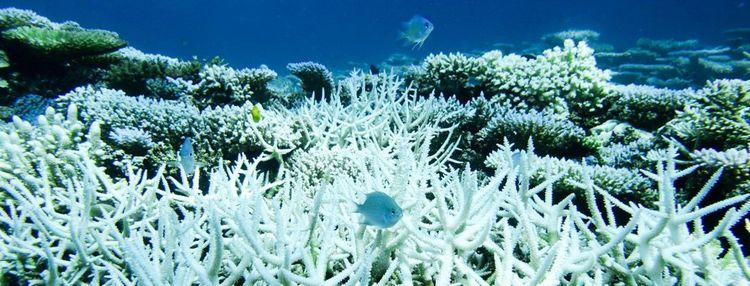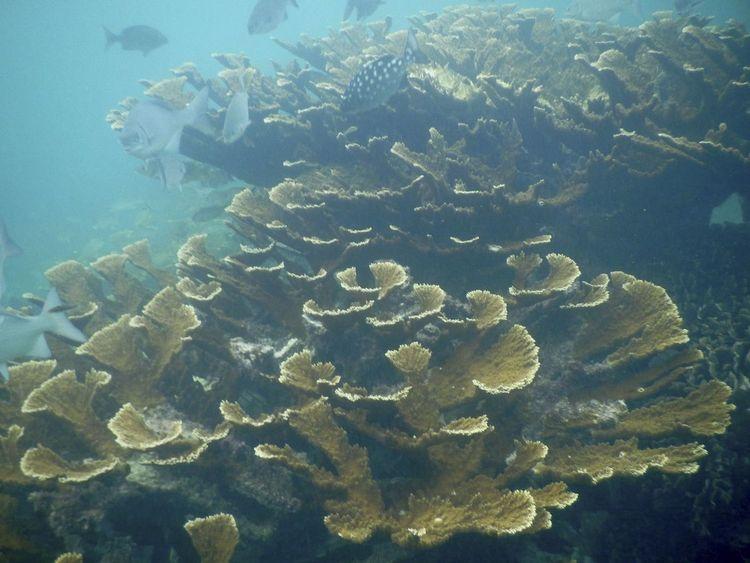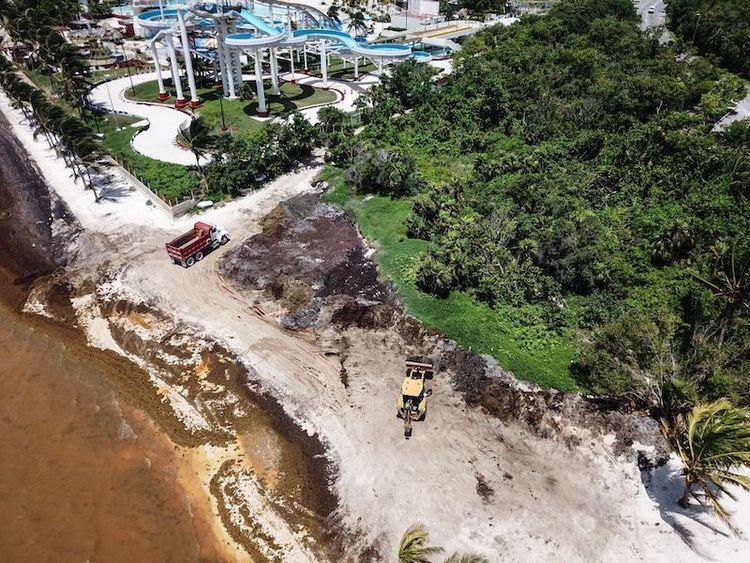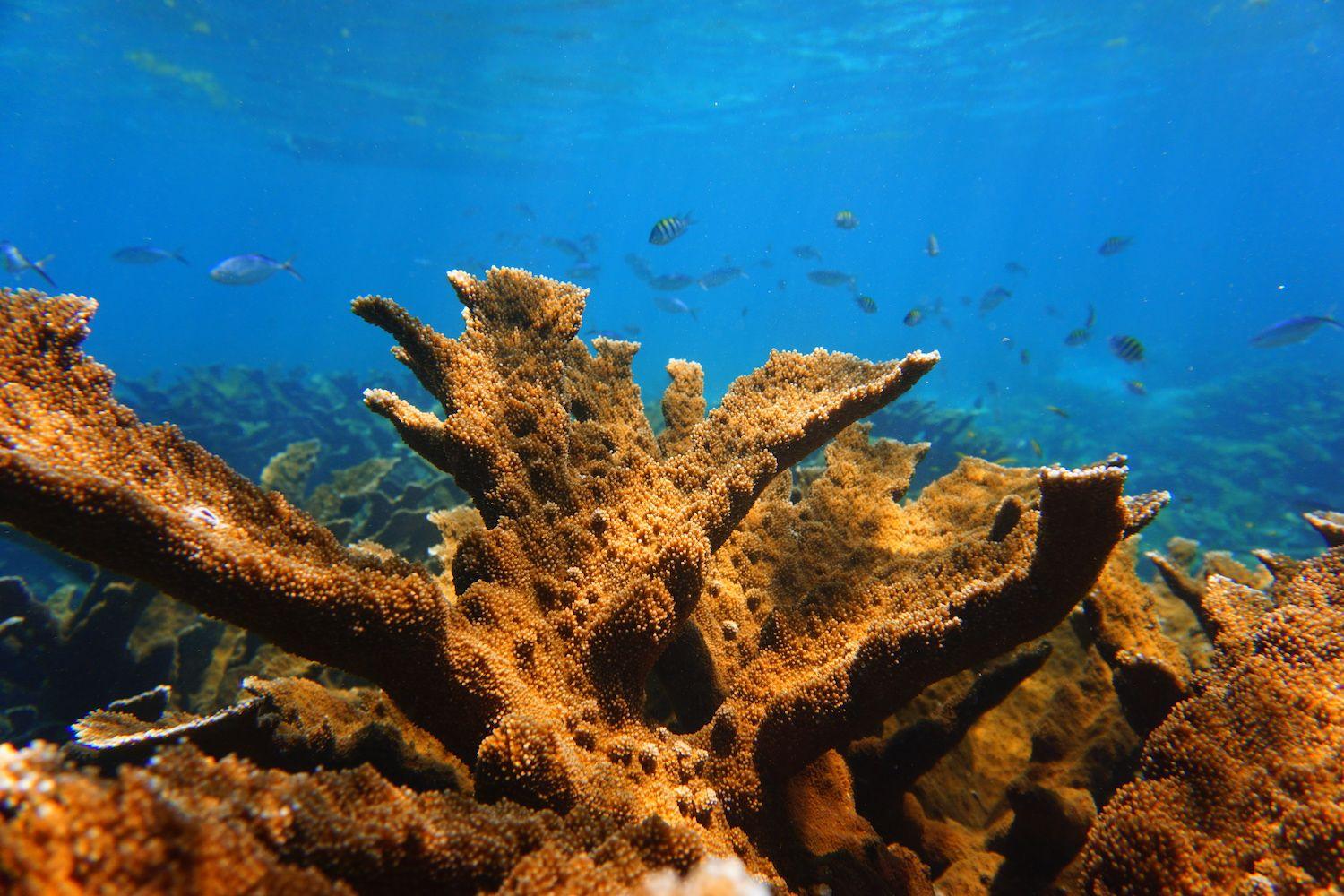Global warming is stalking the reefs of the Mexican Caribbean. A phenomenon known as bleaching spreads as the planet's global temperature increases, leaving these ecosystems increasingly vulnerable.
The ocean absorbs more than 90% of the heat trapped by greenhouse gases (GHGs) on Earth. For Lorenzo Álvarez Filip, researcher at the Academic Unit of Reef Systems at the Institute of Marine Sciences and Limnology in Puerto Morelos, the solution to the harmful effects of climate change on the sea lies in tackling the root problem.
“The underlying problem is to stop emissions, to reverse emissions. Not for today, but so that in 30 or 40 years trends begin to change. We cannot distract ourselves thinking that there are alternative solutions or other paths,” said the researcher at the National Autonomous University of Mexico (UNAM).
Bleaching occurs due to the increase in sea temperature that stresses corals, expelling small algae (symbiotic zooxanthellae) that live in their tissues and carry out photosynthesis, an association that provides nutrients to the coral.
“When there starts to be a stress factor such as the water starting to get very hot, they come out of the corals and leave, as it were, the naked coral. So what we see is the transparent tissue of the coral and in the background the white skeleton of the coral,” Álvarez explained, about the situation in which these animals are characterized by forming colonies.
“Right now (bleaching) doesn't mean the corals are dead. However, if thermal stress and water stays warm longer, it is very likely that corals will start to die and then a bleaching event results in massive coral mortality,” he added.
Reefs are animals on which up to 25% of marine species depend. It is estimated that by 2050, 99% of coral reefs will disappear if GHG emissions are not reduced, according to an estimate by the Intergovernmental Panel on Climate Change (IPCC).
And between 70% and 90% of coral reefs could disappear even if an increase in temperature is limited to 1.5 °C, according to the body that evaluates scientific information on climate change since its creation in 1988 by various United Nations agencies.
Although bleaching phenomena have occurred historically, it has become increasingly present in the seas of southeastern Mexico. This has been confirmed by the organization Healthy Reefs For Healthy People through a series of monitoring activities initiated since 2015.
“This phenomenon is temporary, because it is associated with temperature. We are going to see whitening peaks associated with summer and often with higher peaks at the end of summer,” said Melina Soto, the organization's coordinator in Mexico.

Scott Reef in Australia. Photo: Australian Institute of Marine Science.
Researchers Rosa Rodríguez-Martínez, Francisco Ruíz-Rentería, Brigitta I. van Tussenbroek and María-Guadalupe Barba-Santos from the UNAM recorded bleaching events every time the sea temperature exceeded 30 °C in the period from 1995 to 2005. He did it every year with the exception of 1997.
Two major mass bleaching events occurred in 2005 and 2010 when there were anomalous increases in sea temperatures, according to a Greenpeace report “State of Conservation of Coral Reefs of the Yucatan Peninsula”, published in 2017.
Through an exploration carried out in December 2016, researchers found that bleaching has reached the reef ecosystems of Banco de Campeche. Especially in Cayo Arenas and Triangles in Yucatán.
They highlighted the effects on the coral genera Orbicella, Montastraea, Siderastrea and Pseudodiploria, massive species that contribute to the construction of reefs. And they warned of the danger posed by climate change even when there are no cities nearby.
“The remoteness of Cayo Arenas and Triangles with human settlements does not protect their reefs from the effects of climate change... Triangles was the location with the highest percentage of bleached colonies (38.6%), followed by Cayo Arenas (21%),” the report highlights.
Bleaching is worrying because its effects are several in addition to the ultimate risk of coral death.
“Not all corals look bleached, they're going to die. Many times five or ten percent will do it and everyone else is stressed. Then they're going to resent their physiology. They will no longer grow normally, they will be more sensitive to diseases and they will no longer reproduce,” explained the expert.
In addition to addressing the carbon footprint of societies, the focus of solutions is to reduce local stressors caused by people on coral reefs, which make corals more susceptible to bleaching.
“A lot of times that means improving water quality. From wastewater treatment, such as the prohibition of certain products in the water, and also to trying to counteract the loss of these corals that die thanks to restoration projects, to try to save and save time. Because if nothing is done, if this situation of climate change is not improved, then it will win us, but in the meantime we must keep that genetic information and these organisms as healthy as possible, hoping that they will have a brighter future than their current one,” he said.
Climate Change: Multiple Threats
Ocean acidification is another factor resulting from climate change that threatens corals. This is caused by the absorption of Carbon Dioxide (CO2) from the sea.
“It is known that the oceans are acidifying. And this is basically because as there is more carbon dioxide, or more greenhouse gases in the atmosphere, the atmosphere begins to become more acidic. And the water-air interface begins to change carbon molecules and the sea becomes more acidic. And that's already happening,” Álvarez said.

Photo: Elizabeth Ruíz/ Cuartoscura
This phenomenon doesn't just directly impact corals. “There are many organisms that have calcium carbonate skeletons, a compound very similar to tartar that comes out of showers. What do you do to remove tartar, you put acid on it,” Álvarez exemplified.
Experts agree that this long-term threat is not yet as tangible as whitening. At the same time, although organisms have the capacity to adapt, the speed with which climate change progresses could leave them out of the competition for survival.
Hurricanes
An IPCC report released in August last year concluded that the strongest cyclones, ranging from category three to five, have increased in the last four decades due to ocean warming.
Climate change has direct implications for elements on which hurricanes are nourished, such as ocean heat, humidity and wind. These are formed, among other things, around the heat stored in the upper part of the ocean, which fuels storms “in a similar way to how fuel powers an engine,” explains the National Aeronautics and Space Administration (NASA). On the contrary, cold water weakens these storms.

Photo: Elizabeth Ruíz/ Cuartoscura
These phenomena are no stranger to the Mexican Caribbean. Reefs are exposed to hurricanes and to a certain extent they are part of their life cycle, and when broken by waves they are able to spread and colonize new places, Soto explained. However, frequency and intensity are factors that impair their ability to regenerate.
“Unfortunately, with climate change, projections and statistics and what we have been seeing in recent years is that there are more and more (hurricanes). We break records for wind speed, for altitude, that affects them because when hurricanes arrive they cause waves, which break coral structures. The issue of having them so strong and so followed is that it no longer allows affected populations to recover. They used to be able to expand, but now they don't have the time, because the other hurricane is already hitting them,” Soto said.
The specialist explained that there is parametric insurance in Quintana Roo through which damage caused to reefs by hurricanes is reimbursed with a view to restoration actions.
This insurance works based on the speed knots of a hurricane. The higher the speed, the greater the damage. 100 to less than 130 is considered moderate, 130 to 160 is severe damage, and above 160 is considered a maximum payment for catastrophic damage. From this account, in 2020 Delta's passage was reimbursed with 17 million pesos.
Institutional role
At the national level today there is no National Reef Program, but rather several institutional bodies that jointly address the issue, such as the National Commission for Protected Natural Areas, which has reefs as an objective ecosystem to be cared for, Álvarez explained. By 2017, there were 25 marine Protected Natural Areas that included coral reefs.
However, the institution suffered a real cut of 2.4% in the allocation of its 2022 budget compared to 2021.
Álvarez also recalled that other agencies such as the National Institute for Ecology and Climate Change (INECC) have been dismantled by the federal government.
At the end of July, an internal regulation was published by the Secretariat of Environment and Natural Resources (Semarnat), giving the Directorate General for Policies for Climate Action the power to design national policy and develop a strategy, previously the powers of the INECC.
“One of the institutes that have been disappearing recently. So these institutes or institutions, while not only watching over the reefs, were responsible for linking or integrating in a general way this threat that is common, not only because of reefs but for us, all living beings,” he warned.



Comentarios (0)